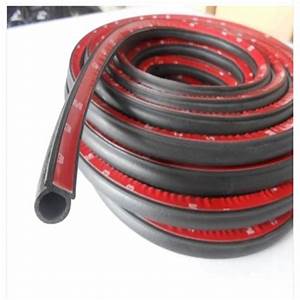
Why Is Injection Molding Used for Plastic?
Are you running a plastic manufacturing company? If so, you must have deep knowledge about plastic injection molding. The process produces volumes of plastic parts for solar, auto, and other related industries.
As the word suggests, the process gets molten plastic injected into a mold. The molten plastic then cools to become solid plastic parts. There is a range of polymers used in injection molding. Among them are nylon, polycarbonates, polyethylene, and liquid silicone rubber.
Reasons Injection Molding is Used for Plastics
Several things make injection molding the best method for plastic manufacturing. Efficiency and reliability are common reasons that make the method great for producing plastic components.
Here are the reasons injection molding is used for plastics.
Efficiency and High Productivity
Efficient manufacturing processes save companies a lot of cash in the end. Injection molding makes plastic manufacturing faster, saving companies time and money. Efficiency also makes it easier for manufacturers to produce a mass of plastic parts and components.
Several things determine the rate of injection molding. One of them is the size of the mold. The smaller the mold, the faster the process, and vice versa.
Another factor is the complexity of the plastic part. The manufacturers use tooling to give plastic parts the right shape and minimize complexity.
For Accuracy
Accuracy is key in the plastic manufacturing process. Injection molding ensures that the dimensions of the manufactured plastic parts and components are consistent. Dimensional consistency aims to create similar end products.
The high pressure during the injection molding also helps create uniform plastic parts. Injection molding makes the manufacturing of complex designs easier. Several factors should be considered to manufacture consistent complex designs.
The first factor is the data collected at the molding center. Comprehensive data collection and analysis are key for accurate and consistent injection molding. Other factors include the training of engineers handling the process and the provided specifications and geometries.
Less Wastage
Low scrap rate also makes injection molding a great method for manufacturing plastics. Computer Numerical Control (CNC) machining and other methods produce more wastage, making them expensive.
Injection molding gets the excess plastics remolded and recycled. Plastic waste is a major threat to the environment. This helps injection molding manufacture plastics while protecting the environment.
To Reduce Labor Costs
Traditional plastic manufacturing is more expensive than injection molding. Automating injection molding eliminates labor expenses, making it affordable for many plastic manufacturers.
Machines and robots in large auto or solar manufacturing companies automate and control injection molding. Streamlining the labor costs makes the entire manufacturing process less costly.
Human errors are common in traditional plastic manufacturing. Mistakes result in defective products, making the manufacturer incur more costs on reworks. Consistency in injection molding eliminates the need for reworks, saving manufacturers good cash.
For Flexibility
There is a range of polymers used in injection molding. You can choose any preferred material/polymer for injection molding. The flexibility aims to manufacture the desired plastic parts and components.
Flexibility comes from the machines used. A good injection molding machine should be able to select the right resins and applications.
The resins should comply with the available laws like Food and Drug Administration (FDA). Other variables that guide the selection of resins are elasticity, water absorption, and tensile strength.
For Durable Products
Injection molding forms strong plastic parts and components. Fillers used in injection molding increase the strength of the manufactured plastics.
Note that the fillers make the plastics strong while minimizing their weight. So, injection molding is the best method for creating quality, portable, and durable plastics. Polycarbonate is the best injection molding polymer for manufacturing strong plastics.
The polymer is strong and resistant to damage. Injection molding is a good method for manufacturing automotive components, eyewear lenses, and containers.
For Multiple Finishes
Injection molding produces plastics with various textures. The surface textures depend on the physical and chemical properties of plastics.
Multiple finishes produced by injection molding prevent the need for secondary applications. Common secondary applications are matter finishes, semi-glass, and shiny plastic finishes. Such secondary applications come with extra costs.
Can Use Many Types of Plastics Simultaneously
Injection molding can use several types of plastics at the same time. Co-injection molding makes it easy for the manufacturer to use different plastics simultaneously.
The ability to use multiple plastics at the same time saves time and increases productivity. Note that the used plastics must be compatible for maximum safety during injection molding. Compatibility also prevents the formation of defective products.
Plastic Injection Molding
Plastic injection molding is a common method used by modern plastic manufacturers across the globe. The method is environmentally-friendly, making it much better than traditional manufacturing. Proper injection molding requires excellent engineering expertise.
Our vision is to excel in modern rubber and plastic manufacturing technologies like injection molding, rubber extrusion, plastic extrusion, die cutting, and more. We manufacture rubber and plastic products used in solar, automotive, and appliances.
